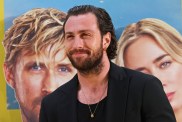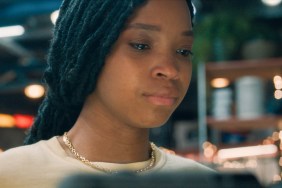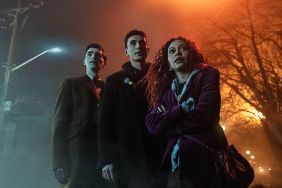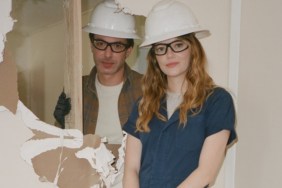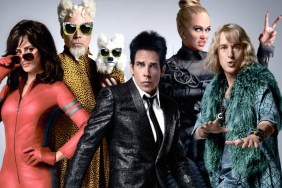Blair Witch creator talks new film

When The Blair Witch Project opened in ’99, it deftly preyed upon audiences’ fear of the dark. A decade later, co-creator Daniel Myrick is flipping the coin in The Objective. Instead of relying on conventional nocturnal scare tactics, Myrick takes on the unenviable task of crafting a daytime horror film in the most barren of locations. Opening in Los Angeles on March 13th, the film stars Jonas Ball as a CIA agent sent into Afghanistan to investigate a mysterious radiation signature. With a Special Ops team, he ventures into a Middle Eastern “Bermuda Triangle” of sorts and faces an inhuman threat. ShockTillYouDrop.com spoke with Myrick about the film shortly after its debut in New York earlier this month.
ShockTillYouDrop.com: The last time we spoke, you were about to embark on The Objective, heading out of the country.
Daniel Myrick: Yeah, heading off to Morocco.
Shock:
Myrick: People ask me if I was intentionally trying to go outside of the genre. I really wasn’t thinking about that. I just thought it was a cool premise and the backdrop was creepy. I’ve been wanting to shoot a thriller in the desert for years. This was a good storyline to do that and it was a lot of fun.
Shock: Where did the seed for the idea come from?
Myrick: For a long time, shortly after The Blair Witch, I moved out to the West Coast and was fascinated with the desert and that sort of thing. No one has really shot any horror movies or thrillers in the open desert. The daylight. It was one of those idle thoughts in my head. Then it wasn’t until a couple of years later, shortly after the invasion of Afghanistan, we started to see all of this footage coming back, sometimes from the soldiers themselves having shot a lot of night vision coverage during combat missions. It was intense and fascinating to watch. Those two compartmentalized ideas merged. One gestating in the background and one more immediate. They came together and thought it would be cool to do a contemporized military ghost story in the desert.
Shock: Where did you find Jonas Ball?
Myrick: He’s great and was quite a find. He did a movie called The Killing of John Lennon the year before that made the rounds at Tribeca. I saw some clips from it, because they hadn’t finished the post-production on it, I thought he was compelling and understated. Almost monotone in his delivery. I thought that would work well for a CIA character that was apart from the pack and who would have an ulterior motive. He just nailed the role and when I met him, he said about three words to me and I thought, “This is my guy.”

When I wrote the original script, I had it in the back of my mind, the potential of having some voice over in there. I wanted to convey Ball’s character from an internalized source and at the time I wasn’t sure if that was going to come across in the shooting. I left that door open though and upon subsequent screenings a lot of that internal dialogue that was he would say we toyed around with and used some of that. I think it worked pretty well sparingly. Voice over can be over-used, but I wanted to strike a balance between getting a little insight into this enigmatic character who, by nature, is pretty closed. But also getting some insight into what’s going on in his head apart from what you saw on screen. It’s a tricky balance to strike and I think Jonas did a cool delivery. Whenever I watch the movie, there are things I want to tweak but it’s certainly reminiscent of Apocalypse Now. I think Coppola did the same thing, he shot the movie, cut it and later decided to put the voice over in. So it’s one of those things that forms organically – with me I had the idea early on, I just wasn’t sure if it was going to work or not.
Shock: How did shooting go in Morocco?
Myrick: We had a tremendous amount of locations to cover. One of the things I didn’t want to have happen with the film – being that the entire thing was shot in the desert, 80% of it happening during the day – I didn’t it to become monotone. Where every location looks exactly alike. We had to cover a lot of geographical areas and the look of the film had to have its own arc. That was a bit of a challenge because you don’t have a lot of money and you don’t have a big crew you’re forced to get real creative before you point the camera. Stephanie Martin, our director of photography, was just brilliant in helping me pick out different textures of rocks and color formations, looks and backgrounds that help diversify the landscape and contribute to the narrative of the film. But it was a challenge. We shot in less than 20 days and we were moving really fast. Some of the direction was pretty loose because we didn’t have the luxury to do all of this coverage and these reverse angles. I had to get a lot in one shot. I like to leave some flexibility for the actors to move and roam and we just covered their actions. I thought it would make it more authentic and not feel so staged.
Shock: Were the conditions tough on the actors? Did you make the conditions tougher as they suffered their on-screen mission?
Myrick: I’m a big believer in involving the actors as people in the process as possible. We didn’t have any trailers or anything like that. I wanted them to all come together, under the same tent, as they did and would in the film. Most of the guys we cast were former Special Forces guys so they didn’t have any star package where they wanted their own makeup trailer or anything like that so they were happy to be sequestered in the same tent. And they bonded as a result. I think that approach to the cast and the shooting had they go through their internal character arcs more honestly and organically as the film wore on. Shooting on any low budget film wears on you and by the end you’re tired. We certainly tried to shoot it in sequence as much as possible but at the same time I wanted them to bond and keep Jonas apart from the guys. It was a method approach to shooting and it worked great on The Blair Witch and I used some of those techniques here as well.

Shock: You pose a challenge to yourself by doing a horror film in the daylight. So how difficult was it to come up with scares when you don’t have that reliable use of shadows and darkness?
Myrick: We’ve got a group of young Special Forces guys here who are trained and walking through mountains and rocks – how do you make that scary? I looked at how the psychology plays and I tried to lay the groundwork early on in the film that Jonas’ Keynes character is up to something. As time moves on, they see this progression of events that get stranger and stranger. The events are fairly simple out of context, but they’re greater than the sum of their parts. That was the challenge because we didn’t have the budget for visual effects. So we had to make these beats throughout the movie play scary but we had to do it in a subtle way. The lights coming down the road and split apart – that just takes you off guard as a viewer. It’s something you don’t expect. And in some ways I think that’s creepier than seeing a monster coming out of a closet. Twisting your perception of what you think is right and throwing the audience off balance heightens it.
Shock: There’s a subtle moment where Keynes sees a figure on the horizon. It’s something so slight but it makes you wary that something is up.
Myrick: Right, there are those little touches and funny details that challenge the viewer to pick up on, but when they do it’s a cool payoff.
Source: Ryan Rotten, Managing Editor

